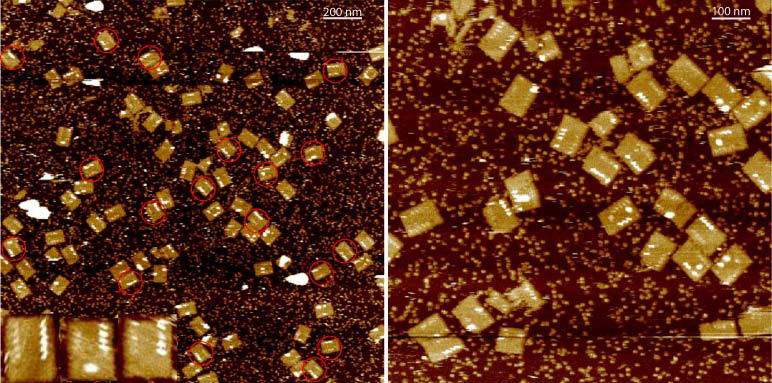Scientists at the CSIC and at the IRB Barcelona have obtained a nanosensor based on small DNA fragments, using an advanced technique known as DNA origami. The sensor can detect the activity of the human enzyme hAGT, which is interesting for anticancer research.
 The new molecular sensor can detect the activity of the human enzyme hAGT. This is interesting for anticancer research, as this enzyme is one of the targets for new drugs and it is one of the markers that can predict the success of a new treatment. It is, also, a substantial step in the control of DNA as building material for biomedical devices at the nanometric scale.
The new molecular sensor can detect the activity of the human enzyme hAGT. This is interesting for anticancer research, as this enzyme is one of the targets for new drugs and it is one of the markers that can predict the success of a new treatment. It is, also, a substantial step in the control of DNA as building material for biomedical devices at the nanometric scale.
This new nanosensor has the size of 100 nanometres: it is a thousand times smaller than a bacteria and it would be necessary millions of sensors like this to fill the hole in a sewing needle.
The work, published in the magazine Angewandte Chemie, has been developed by the group of Nucleic Acids Chemistry at the Institut de Química Avançada de Catalunya (IQAC-CSIC). The main author is Carmen Fàbrega, who is working in the same group but assigned to the IRB Barcelona.
